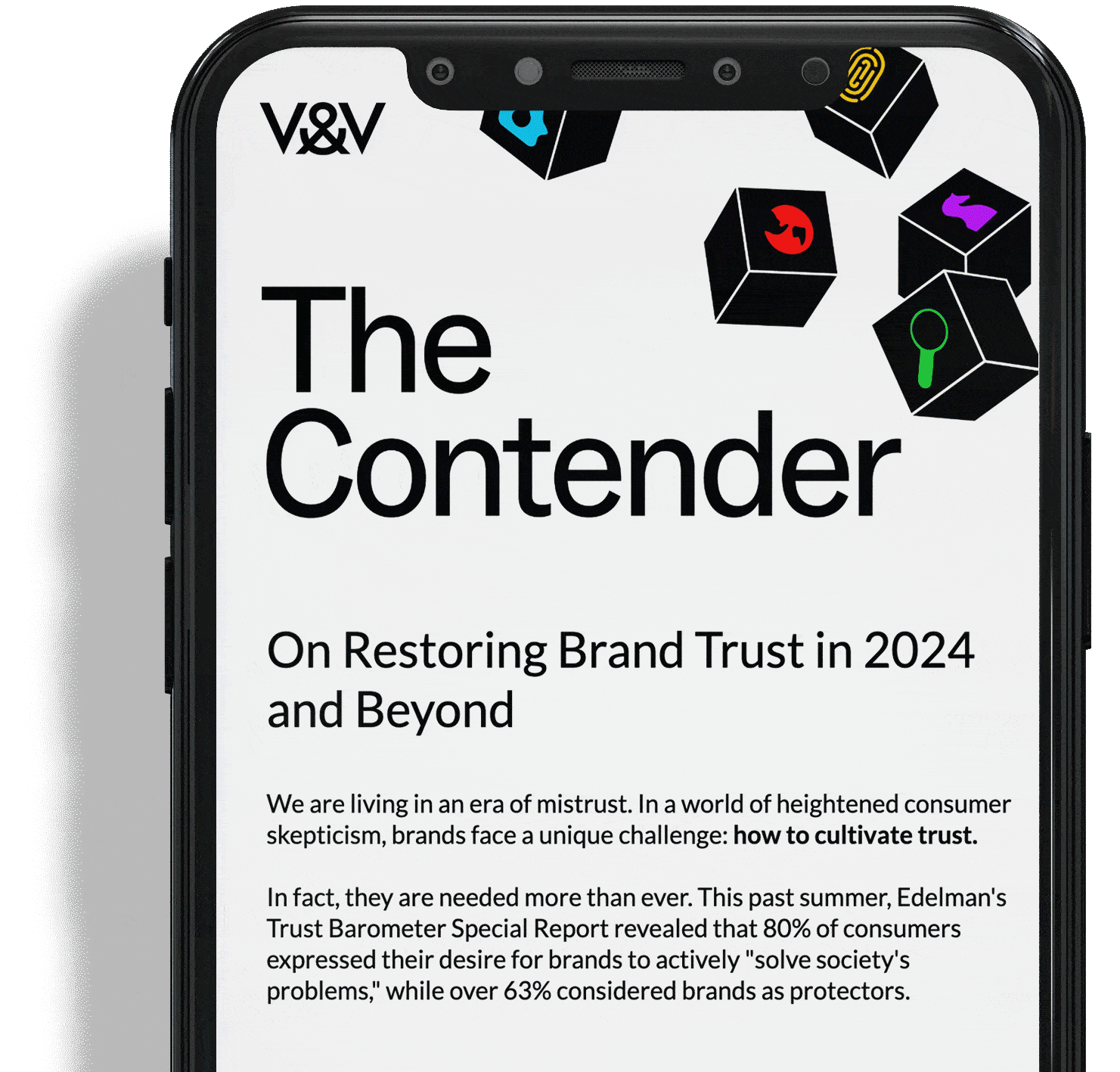What are characteristics of Challenger Brands?
To build a Challenger, you need to think like a Challenger.
It takes a certain strategic approach to align profit with purpose while simultaneously taking hold of your unfair advantage so you can dislodge the incumbent.
Whether you’re a startup or an established brand, complacency is a business’s biggest risk. Technology moves fast and customer expectations move even faster. But, no matter how fast the world moves, there are a number of characteristics that make up a Challenger Brand that can be used to check your progress is heading on the trajectory you had planned.
The below is what makes a Challenger Brand, straight from 5&Vine’s Challenger Playbook.
1. Challengers pursue both profit and purpose
We believe in Challengers that take an alternate approach to capitalism, and believe that business isn’t about purely chasing quick cash but can be harnessed as a force for good. Challengers question everything in the hopes the answers will establish a new normal that is better for people and the planet. The strategies they develop plan to address the unmet needs of their customers and their narratives are ones that resonate.
2. Challengers are brave
Challengers are brave by nature, speaking out against wrongs and taking actions to resolve them. Whether it’s business-centric issues like egregious fees, bad customer service, or employee connection or more cultural issues like discrimination, racism or climate change, a Challenger’s responsibility extends well beyond their obligation to shareholders. Instead, it’s inclusive of its customers, employees, communities both local and further afield, and the Earth we all inhabit.
3. Challengers question the status quo
We’ve already talked about questioning assumptions and having the courage to speak out against wrongs. Because of their innovative approach to business, often from a position behind the incumbent, Challenger Brands have the power to change the way we perceive things and live our lives. When it seems like everyone is following a set process, shopping in a proven way, or packaging their products correctly, a Challenger can come in and blow assumptions out of the water. The result? The displacement of market leaders and, more often than not, a better way to do things.
4. Challengers surround themselves with Challengers
On our blog, we recently discussed Wharton School professor Adam Grant’s thoughts on building a Challenge Network. It’s a belief that says, in order to truly progress a business, you should build a team of critics, outsiders, and fearless creatives around you. In his book Think Again, Grant discusses it in the context of Brad Bird, who joined Pixar in 2000. By building a challenge network Bird was able to release Pixar’s most complex film at the time (The Incredibles) while lowering production costs. There’s a lot to learn from having a Challenge Network, especially when you lean into diversity, engage with those on the team who think differently and are unafraid to swim against the tide. Challengers know to surround themselves in individuals who believe they can make the impossible, possible.
5. Challengers make it work with the resources they have
The approach of a Challenger is often scrappy, smart, and creative in problem solving so it can get the job done with the resources available at the time. A key strategy in doing so successfully is spending budget on tactics that you can test and iterate fast. You want to engage in tools that have high learning potential at a low cost. Take AdWords as an example. Running a campaign overnight is easy, costing only $100, but (vitally) you’re guaranteed to learn something. With that, you can again get scrappy to push the learning to its potential, be that in helping you refine your messaging, building out evergreen content, or ranking with SEO.
6. Challengers prioritize community and connection
Building a Challenger isn’t a solo job. It takes collaboration, connection, and community. In order to improve the lives of others you need to get on the ground and speak with them to see where the problems really lie. Whether it’s mental health, systemic racism, child care, disenfranchisement, or something else, open yourself up to criticism and tough conversations both inside your business and outside it so you can challenge what’s already in place and set the precedent for what’s to come.
How you can start embracing a Challenger Brand mindset
Now you know what defines a Challenger mindset you can start taking steps to embrace it. Here are some steps to make that happen.
-
Analyze the market to identify the truths of your industry and your competitors’ position in that landscape. Scrutinize everything from their packaging and quality to delivery, customer service, social media communication, jobs, and product availability. As you do, consider the following questions:
– If we had to start from scratch, releasing ourselves from constraints, how would we address the current customer pain points?
– Who are we serving and who are we ignoring or leaving behind? How can we better serve them?
– What would need to be true in order for us to deliver a product or service at half the cost or twice the quantity, or with considerably less packaging?
-
As part of this industry analysis put special attention on your own brand. Explore customer reviews, both positive and negative, and embark on a process of social listening to see what people are saying about your brand online.
-
Buy your product or service as a customer, following the journey they would take so you can question whether it can be done better. Ask others in your network to follow suit, with an emphasis on diversity of opinion
-
Do the same with your competitors.
-
Spend a week working with your customer service team.
As you do, document every step. Ask yourself: Why does it have to be this way? How could this be better?
And then, do something about it. Put a plan of small actions in place that you can start to solve for immediately, and start planning for bigger ones.
In closing
Accept that you will fail, because it will happen. It’s the only way you’ll make progress.
Embracing Challenger thinking means embracing discomfort. Use that discomfort to propel you forward. Let the feeling become the force that guides you to ask hard questions and change something in the world for the better.
For more on how 5&Vine can help your business make the most of its unfair advantage and position it for a win, book a Free Consultation here.




